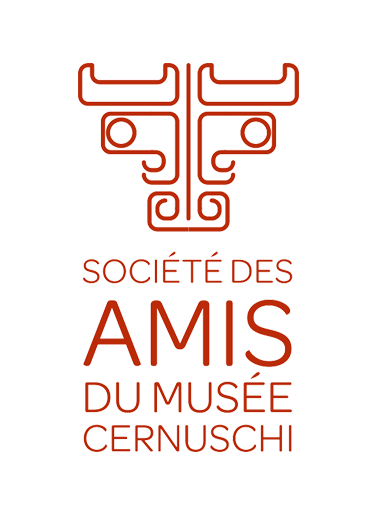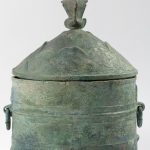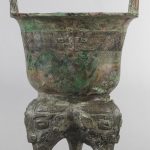Support to feel the pulse
The miniature pillow-shaped supports are one of the indispensable instruments of traditional Chinese medicine doctors and therapists. The latter use, in fact, four methods of examination to establish a diagnosis: sight, hearing, speech (questioning) and touch which consists of palpating the patient's body and feeling the pulse. To carry out this last examination, it is necessary to raise the wrist thanks to the cushion for taking the pulse (maizhěn 脉枕), which can be made of all kinds of materials.
That of the museum, made up of clay slabs assembled with slip, is coated, with the exception of the flat base, with a white glaze, low in alumina and opacified with phosphorus oxide. The latter is responsible for the very soft moss color of the touches of copper oxide deposited with the brush.
This abstract decoration, with patterns devoid of contours (mògǔ 没骨), could be part of the vogue for a certain exoticism, here Iranian or Indian.
Cartel:
Support to feel the pulse
Late Tang dynasty (618-907) – Chu dynasty (907 or 927-951), early XNUMXthe century China, Changsha kilns (Hunan)
Stoneware with opaque glaze, decoration painted with copper oxide
H.7,8 cm x W.13 cm x D.9,7 cm
MC 9523
Gift of the Society of Friends of the Cernuschi Museum, in association with Patrice Vergé, 1976
Photo credit :
© Paris Museums / Cernuschi Museum
 Support for taking the pulse (Common name), 900, Transparent glaze with green spots. Cernuschi Museum, Museum of Asian Arts of the City of Paris. |
 Support for taking the pulse (Common name), 900, Transparent glaze with green spots. Cernuschi Museum, Museum of Asian Arts of the City of Paris. |
 Support for taking the pulse (Common name), 900, Transparent glaze with green spots. Cernuschi Museum, Museum of Asian Arts of the City of Paris. |





